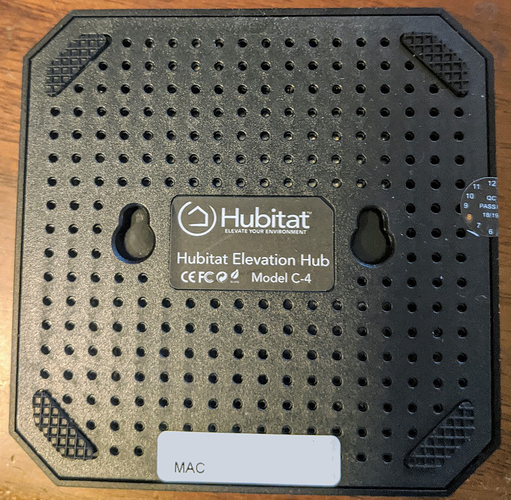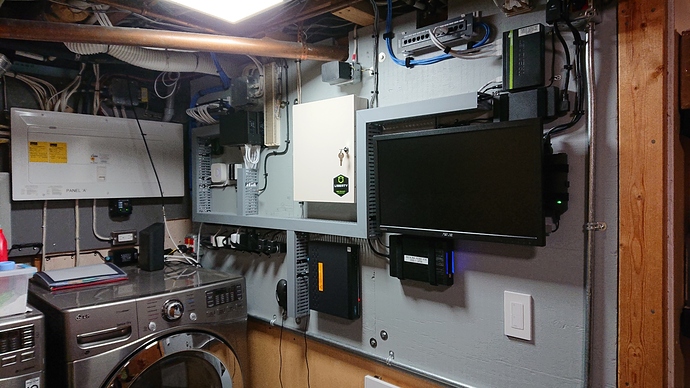Has anyone carried out any tests on the effect of different orientations of the hub and the effects on performance? I seem to recall a YouTube video on something similar on another hub (Hue?), but don't know how relevant that would be.
As it has no fixing arrangement on the back, I suppose it is intended for it to be placed flat, but that is not always so convenient when attempting to get good coverage on two floors.
My hub is the European version (internal Zigbee & USB Z-Wave stick) and I am currently more interested in optimisation for Tasmotized and Zigbee devices
This has been discussed few times. Search to review the other threads on it as well.
Thanks TechMedX.
I had read these, but I was rather hoping that someone might have the equipment to actually measure the performance from various aspects although recognising that house construction will have a profound effect.
I picked up the point made by one contributor about "slots on the back.." and thought this might indicate a different (older?) model, because there are no slots on my version.
Although my European version comes with a Z-Wave dongle, I don't think I will be using this protocol and I am predominantly using Tasmotized WiFi devices, plus 9 or 10 Zigbee devices including Hue and IKEA
Very strange. Did Hubitat decide that wall mount was not the best option? Here is my C-5 with no mounting holes!
I am using a vertical stand that was 3D printed from a design kindly developed by @snell
It has been in my networking "closet" now since Feb without issue. Been quite happy how everything can be kept organized!

My hub is mounted vertically. I've got a large tech panel to accommodate home automation, security and networking. Everything seems to play well together, I don't seem to have interference between systems.
As for mounting, I would have liked to see the mounting option of the C-4, however in absence of this (on many devices), I use a Velcro strap (purchased in a roll).
I secure each Velcro strap with two countersink wood screws and two finishing washers. Then I place four (taller) rubber feet against the panel. Then ensures that A) the device is away from the panel to help with air circulation when necessary and B) the device is not scratched or damaged by coming in contact with the screws or finishing washers. It would be easy to use small wall anchors for plaster or drywall instead. I've mounted power adapters, hubs, bridges and numerous other devices this way. One or two straps depending on size and weight. Always secure and works great.
Unlike SmartThings in the past, I have had much better success pairing devices. Range seems to play a small role (at least for me) compared to my ST hub which was also mounted the same way (you can still see the holes on my board).
I have used the Z-Wave Toolbox, which can give some indication of signal strength. You may not want to spend the money though.
Short answer, and I've written about this a bunch of other times, so I won't belabor it.
It doesn't really matter what orientation you put the hub in. You don't know the polarity of the hub, or the antennas in your devices. We can argue this for hours, but just trust me on this.
Metal in your walls, nearby WiFi devices too close, that sort of thing can cause problems. Avoid placing the hub near large metal appliances or ducts, and try to place it somewhere central in your house.
Use repeating devices, and the best practices described in a few articles on building out your mesh, and you'll be fine.
S
Thanks scottgu3. That is reassuring and I can now install on the basis of practicality rather than technical limitations.
Thanks also to ddalder for the photos and experience. I was a bit surprised to see quite a few wires around the hub as I was making every effort to avoid this, to the extent of moving the hub away from my router, Ubiquiti gateway, switches and NAS drive etc.
Obviously, here again, I was being overly cautious, but I might move a little further from 2 copper central heating pipes!
I have my 2 radio hubs, I split Zwave and Zigbee to different hubs, mounted on the wall in a small closet under my stairs. It is above my metal HVAC return box that has devices such as my NAS, UPS, and Wi-Fi router sitting on top. I have had it this way since 2014 when I bought my first SmartThings hub, and last 2.5 years since I have been using HE.
Point being, concentrate on a strong mesh with repeating devices in good locations vs hub placement because in my personal experience that hasn’t mattered. Start close to hub and work your way outwards. But remember YMMV.
Oh I do have Zigbee channel set to 20 and my router Wi-Fi set to 1 and my two APs set to 6 and 11 so things don’t overlap and cause interference.
Ideally I'd like to have set-up a different area for my networking, automation, etc., but unfortunately, it wasn't possible with the current configuration of the house and still keep it essentially together.
As you can see, and it's not ideal, my hub is very close to the electrical panel and other components.
I chose to use GE/Jasco Z-Wave Plus outlets and in a couple of cases their other lighting products for which I was unable to fine a suitable Lutron product for the application. With a network of these throughout the house and (detached) garage, my Z-Wave network is solid.
Wow. Thats impressive. Remind me NEVER to share photos of my setup! Lol
S.
Nice. You are at master level of cable management! You have an UPS as well? Mine will keep everything running for about 3 hours.
Thanks, guys. I still need to have a small shelf made to relocate the new cable modem, so this isn't quite what my end result will be. I kind of cheated a little lol, many years ago when I worked in IT I used to do a lot of this type of work. I still have all my tools for network and telecom wiring and bought a conduit bender so I could install EMT wherever necessary in the house/garage.
I've got a UPS out in the garage to power a POE switch, Orbi satellite and a couple of other devices. The picture below is in the house for my tech panel and a few other devices through the house. Two of my Lutron controlled ceiling lights are on the UPS as well. One at the basement stairs and one outside of my mom's bedroom. Each of the two UPS's installed have the optional external battery pack to further increase runtime. One estimates a runtime of about 4 hours and the other is about 6.
A linepower monitor is setup to automate lighting for the two ceiling lights, as well as to send alerts to my phone.
While there are some good setups here. I doubt any one will top my POE adapter and piece of cardboard holding my Hubitat in the corner of my home office. 
But it is actually held up with friction and a torn off piece of the POE adapter box. #zerowaste
That's awesome! At the end of the day, it's whatever works 
It was ment to be a test if that was a better location. But time gets away from me and now it is what it is!
I have projects like that, too! Completely understandable.
Where did you get those nice cable management rails?
We have some industrial electronics suppliers where I live and was able to source everything there. These are available in different sizes, although they are all pretty much 6-Foot lengths. In the case of the ones shown in my photo, the raceway and the cover are sold as separate pieces. Some brands sell them as a set. The part numbers for mine, grey in colour (1.5" wide x 3.0" tall) are:
Raceway/Duct - TYD15X3NPG6
Cover- TYD15CPG6
If you Google the part numbers, you will find lots of places to get them. It's probably best to search yourself so you can find a supplier geographically close to you.











